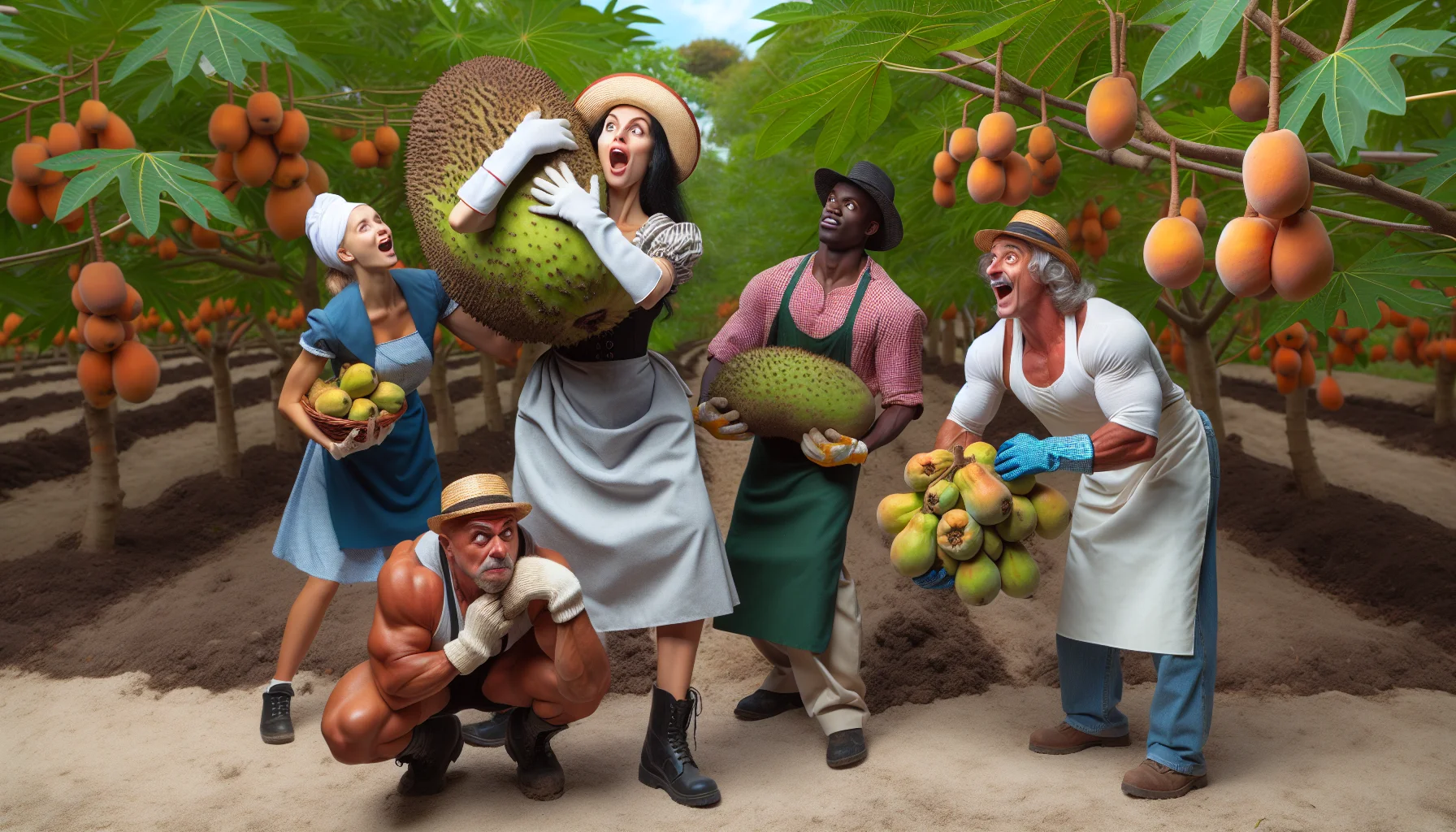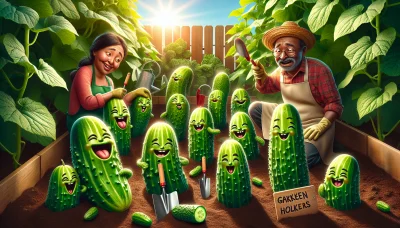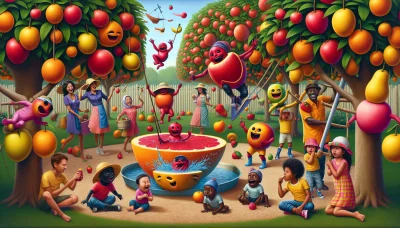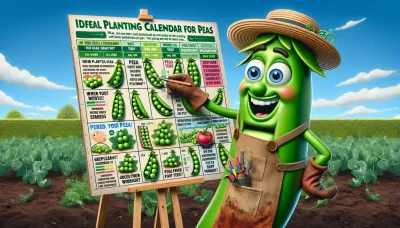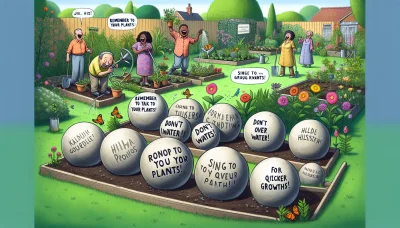Pawpaw patch Quiz
Test Your Knowledge
Question of
Introduction to Pawpaw Patch
A pawpaw patch refers to a specific area in a garden or landscape dedicated to growing pawpaw trees, scientifically known as Asimina triloba. These patches are significant in gardening due to the unique requirements of pawpaw trees, including their need for well-drained soil, partial to full sunlight, and protection from strong winds. Furthermore, pawpaw patches contribute to biodiversity by attracting various pollinators with their large, purple flowers and providing wildlife with their nutritious fruits. Cultivating a pawpaw patch can also offer gardeners the joy of harvesting their own pawpaws, which are known for their sweet, custard-like flavor, often compared to bananas or mangoes. This makes pawpaw patches not only an aesthetic addition to gardens but also a practical one for those looking to grow their own fruit.
Benefits of Growing Pawpaws
- Nutritional Value: Pawpaws are rich in vitamins C and A, magnesium, iron, and dietary fiber, making them a healthy addition to any diet.
- Low Maintenance: Once established, pawpaw trees require minimal care, making them an excellent choice for gardeners seeking low-maintenance fruit trees.
- Pest Resistance: Pawpaw trees are naturally resistant to many pests, reducing the need for chemical pesticides in your garden.
- Shade Provider: With their large, tropical-like leaves, pawpaw trees can provide ample shade, creating a cooler microclimate in your garden.
- Supports Local Wildlife: Pawpaw trees produce fruit that is a food source for various local wildlife species, thus promoting biodiversity.
- Unique Flavor: Pawpaws offer a unique, tropical flavor that is often compared to bananas, mangoes, and melons, adding variety to your home-grown produce.
- Soil Improvement: The deep roots of pawpaw trees can help improve soil structure and fertility over time.
- Attractive Landscaping: With their distinctive leaves, attractive flowers, and unique fruits, pawpaw trees can enhance the aesthetic appeal of any garden.
Choosing the Right Location for Your Pawpaw Patch
When planning to grow pawpaws, selecting the right location is crucial for your success. Pawpaws thrive in areas that offer the perfect balance of sunlight and shade, as they naturally grow under the canopy of larger trees in the wild. The ideal spot should provide them with partial shade, especially to protect young plants from the harsh afternoon sun. Soil type also plays a significant role in the health and productivity of your pawpaw trees. They prefer rich, well-drained soil that is slightly acidic to neutral. Ensuring the right conditions can lead to a bountiful harvest of this unique and delicious fruit.
Planting and Caring for Your Pawpaw Trees
- Choose the Right Location: Pawpaw trees thrive in a spot with full sun to partial shade and shelter from strong winds.
- Soil Preparation: Ensure the soil is well-draining with a slightly acidic to neutral pH. Amend heavy clay or sandy soils with compost to improve fertility and texture.
- Planting Depth and Spacing: Dig a hole that is twice as wide and the same depth as the root ball. Pawpaw trees should be spaced 8-10 feet apart to ensure enough room for growth.
- Watering: After planting, water the tree generously to settle the soil around the roots. Continue to water deeply once a week, allowing the soil to dry out slightly between waterings.
- Fertilization: In the first year, avoid fertilizing to encourage natural root growth. Starting in the second year, apply a balanced fertilizer in early spring to support healthy development.
- Mulching: Apply a 2-3 inch layer of organic mulch around the base of the tree to retain moisture, regulate soil temperature, and reduce weed competition.
- Pruning: Prune in late winter to remove any dead or crossing branches and to maintain a strong structure.
- Pollination: Plant two or more pawpaw varieties close to each other to improve cross-pollination and fruit set.
Common Challenges in Growing Pawpaws
Pawpaws, despite being a relatively low-maintenance fruit tree once established, face their own set of challenges during the growing process. One of the primary issues is the susceptibility to pests such as pawpaw-specific insects that can damage the leaves and fruit. Regular monitoring and the use of organic pest control methods can help manage these pests effectively. Diseases like pawpaw fungal diseases can also pose a threat, often exacerbated by poor air circulation and wet conditions. Ensuring proper planting spacing and site selection can mitigate these risks. Additionally, pawpaws require adequate pollination to produce fruit, which can be a challenge due to their need for cross-pollination. Gardeners can address this by planting multiple trees to ensure diversity and improve the chances of successful pollination. With careful attention and management, these challenges can be overcome, allowing gardeners to enjoy the unique fruits of their labor.
Harvesting and Using Pawpaws
The best time to harvest pawpaws is when they are fully ripe, which typically occurs in late summer to early fall, depending on your local climate. You'll know they're ready when the fruit is soft to the touch and has a strong, sweet aroma. It's important to pick them gently to avoid bruising. Once harvested, pawpaws can be eaten fresh or used in a variety of recipes. They make excellent additions to smoothies, ice creams, and baked goods, offering a tropical flavor reminiscent of banana and mango. For those looking to preserve the fruit, pawpaws can be frozen, either whole or pureed, ensuring you can enjoy their unique taste year-round.
Conclusion: The Joys of a Pawpaw Patch
Embracing the cultivation of pawpaws in your garden opens up a world of delights, both for the palate and the spirit. This unique fruit, with its tropical flavors reminiscent of banana and mango, offers a rare taste experience that can be grown right in your backyard. Beyond the joy of harvesting your own exotic fruit, a pawpaw patch contributes to biodiversity, supporting local wildlife with its flowers and fruit. Cultivating pawpaws also connects you to a piece of North American heritage, as this native plant has been cherished across generations. Starting your own pawpaw patch is not just an investment in your garden's diversity, but a step towards sustainable living, offering a rewarding journey filled with lush foliage, fragrant flowers, and delectable fruits. Let the joy of growing pawpaws inspire you to create a little tropical paradise of your own, no matter where you are.
